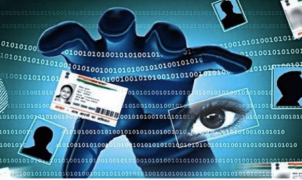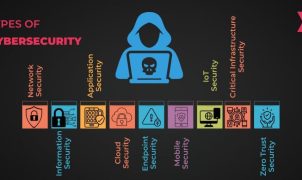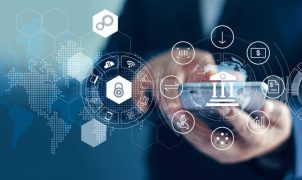In the era of rapidly advancing digital technology, the risk of significant leaks of personal or organizational data is heightened. This is due to the multitude of online activities we engage in – from financial transactions, shopping, planning, to even work. Consequently, our digital footprint is scattered everywhere, making this information susceptible to leaks or theft, leading to substantial damages for both organizations and individuals.
So, what can be done to ensure the safety of information security in the digital age? In this article, let’s examine the current state of cyberattacks and explore ways to secure the information of individuals and businesses in the digital era.

1. Current Landscape of Cyber Attacks and Data Breaches
In an era where cybercrime is rapidly becoming one of the most harmful and threatening offenses, information security becomes a crucial element to navigate the digital world safely. Examining the statistics of damages resulting from cyberattacks highlights the significance of information security.
- Approximately 800,000 internet-based attacks occur annually.Fraudulent attacks have increased by 48% in the first half of 2022, with reports of 11,395 incidents causing a total damage of 12.3 million USD.Ransomware attacks increased by 41% in 2022, and the identification and recovery from a breach take an average of 49 days longer than an average breach.Data breaches in healthcare caused an average damage of 10.1 million USD per incident in 2021.Expenditure on information security and risk management is projected to reach 188.336 trillion USD in 2023.In the first quarter of 2022, the financial industry was the most targeted, comprising 57% of all fraudulent attacks (According to Group-ib).According to Security Magazine, there were a total of 255 million cases of phishing attacks in the first six months of 2022.
- Ransomware: The trend of ransomware attacks has surged in recent years, affecting both large and small organizations, with demands for ransom often being high.
- DDoS Attacks: Distributed Denial of Service (DDoS) attacks remain a significant threat, with hackers utilizing millions of insecure IoT devices to generate fake access traffic.
- Phishing: Phishing attacks, where hackers attempt to deceive users into providing personal information or passwords, continue to be a common attack method.
- Supply Chain Attacks: Hackers increasingly seek ways to attack service or software providers, especially those catering to numerous large organizations.
- Infrastructure Attacks: Attacks on critical infrastructure such as energy, water, and healthcare services are becoming more common, raising concerns about national security.
2. The Role of Information Security
Information security is a critical and necessary concern in today’s digital environment. Information security encompasses tools and processes that organizations employ to protect information. This includes implementing policies to prevent unauthorized access to personal or business information.Information security safeguards sensitive information from unauthorized activities, including checking, modifying, recording, and any unauthorized interruption or destruction. The goal is to ensure the safety and privacy of essential data such as customer account details, financial data, or intellectual property.
- Data Protection: Avoiding leaks, losses, or destruction of crucial data, such as personal information, financial data, or confidential business information.
- Ensuring Privacy: Protecting users’ personal information from unauthorized access, enhancing user trust when using online services.
- Preventing Attacks: Minimizing risks from threats such as viruses, malware, ransomware, and attacks from hackers.
- Legal Compliance: Many countries have regulations regarding information security; compliance helps avoid legal risks and penalties.
- Protecting Reputation: A security breach can cause significant damage to an organization’s reputation. Protecting information helps avoid such situations.
- Enhancing Trust: Customers and partners are more likely to trust an organization that prioritizes information safety and security.
- Ensuring System Readiness: By preventing and responding promptly to threats, IT systems can maintain stable operations without disruption.
- Cost Minimization: A security breach can incur significant costs, from data recovery to legal penalties and customer loss. Investing in safety and security helps minimize these costs.
3. Six Most Common Forms of System Security Attacks
In recent years, there have been numerous large-scale network attacks causing severe impacts on businesses and individuals. The theft of social security numbers, bank account details, credit card information, and sensitive data leaks have been emphasized. The main cause is that most people store their data on cloud storage services such as Dropbox or Google Drive.Some of the most common types of network attacks include:
- Online Fraud:
- Description: Online fraud is a network attack involving deceiving users into clicking on malicious links or attachments. It can lead to the theft of sensitive information, such as login details or financial data.
- Malware Attacks:
- Description: Malware is a type of harmful software that can infect computers and devices. It can steal information, take control of devices, or perform attacks on other systems.
- Denial of Service (DoS) Attacks:
- Description: A denial of service attack prevents users from accessing a system or service. This can be achieved by flooding the system with access requests or disrupting the system, making it unable to function normally.
- Ransomware Attacks:
- Description: Ransomware is malicious software that encrypts files or systems and demands a ransom for decryption. It can result in the loss of essential data or complete system shutdown.
- Man-in-the-Middle (MitM) Attacks:
- Description: A Man-in-the-Middle attack involves an attacker intercepting communication between two parties. This can be done by eavesdropping on network connections or redirecting access traffic to a malicious server.
- SQL Injection Attacks:
- Description: SQL injection attacks exploit vulnerabilities in web applications to inject malicious SQL code into a database. This code can view, delete, or modify data in the database. SQL injection attacks can also take control of the server or perform other harmful activities.
4. Implementing Information Security Measures in the Digital Age
4.1. Personal Information Security:
- Use Strong Authentication Protocols:
- Advice: Create strong passwords by combining lowercase and uppercase letters, numbers, and symbols. Regularly change them and avoid using the same password across multiple websites. Password manager tools can assist in keeping track.
- Advice: Be cautious about sharing too much personal information on social media. Check your privacy settings to control who sees your posts and be careful when sharing location, hometown, birthdate, or other personal details.
- Advice: Exercise caution when using free public Wi-Fi networks. Most of them have minimal security measures, making it easy for others on the network to access your activities. Wait until you are on a secure, password-protected network before conducting credit card transactions.
- Advice: Cybercriminals often create deceptive schemes resembling legitimate communication from banks, government agencies, or other trusted sources. Be cautious of unsolicited emails, and avoid clicking on links or downloading attachments from unknown sources.
- Employee Training and Awareness:
- Recommendation: Regularly train employees on information security practices and raise awareness about the latest cyber threats. This includes recognizing phishing attempts, secure password practices, and identifying suspicious activities.
- Regular Software Updates and Patching:
- Recommendation: Ensure that all software, including operating systems and applications, is up-to-date with the latest security patches. Regularly update antivirus software to detect and eliminate new threats.
- Implement Access Controls:
- Recommendation: Grant employees access only to the information necessary for their roles. Implement strict access controls to prevent unauthorized access to sensitive data.
- Backup and Recovery Procedures:
- Recommendation: Regularly backup important data and have a robust recovery plan in place. This helps in the event of a ransomware attack or accidental data loss.
- Incident Response Plan:
- Recommendation: Develop and implement an incident response plan outlining steps to be taken in case of a security breach. This includes communication protocols, legal compliance, and steps to contain and recover from the incident.
5. Future Trends in Information Security
As technology continues to advance, so do the methods employed by cybercriminals. Anticipating future trends in information security is crucial for organizations and individuals to stay one step ahead of potential threats.
5.1. Artificial Intelligence (AI) in Security:
- Prediction: The use of AI in cybersecurity will increase, enabling more proactive threat detection and response. AI systems can analyze vast amounts of data to identify patterns, anomalies, and potential security risks.
- Prediction: The development of quantum computing poses a potential threat to traditional cryptographic methods. The need for quantum-resistant cryptographic algorithms will become more critical to ensure secure communication.
- Prediction: The adoption of the Zero Trust security model will rise, emphasizing the verification of every user and device attempting to access the network. Trust is never assumed, and strict access controls are maintained.
- Prediction: Biometric authentication methods, such as fingerprint or facial recognition, will become more prevalent. These methods offer an additional layer of security beyond traditional passwords.
- Prediction: The use of blockchain technology for securing data and transactions will increase. Its decentralized and tamper-resistant nature provides a robust framework for maintaining the integrity of sensitive information.
Cre: savvycom


















































































































































